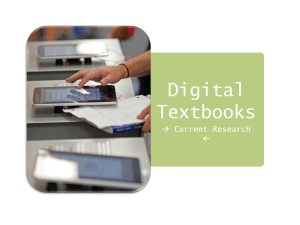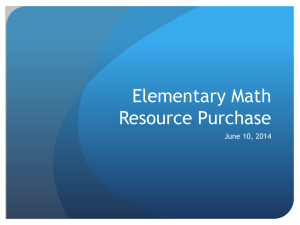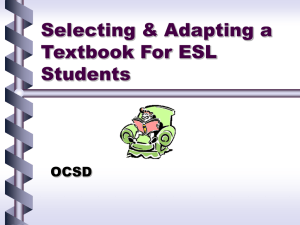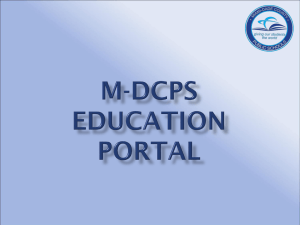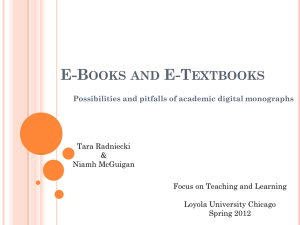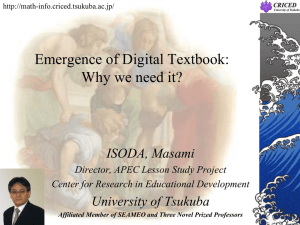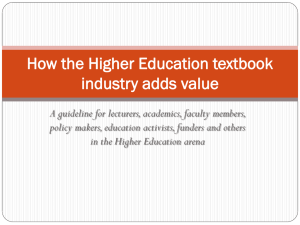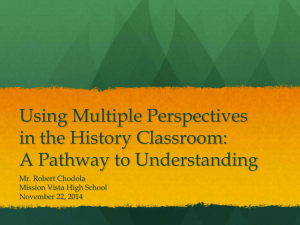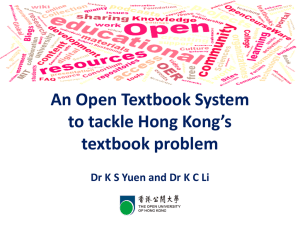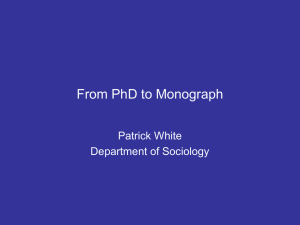TEXTBOOKS IN THE 21ST CENTURY - Rosalind Franklin University
advertisement
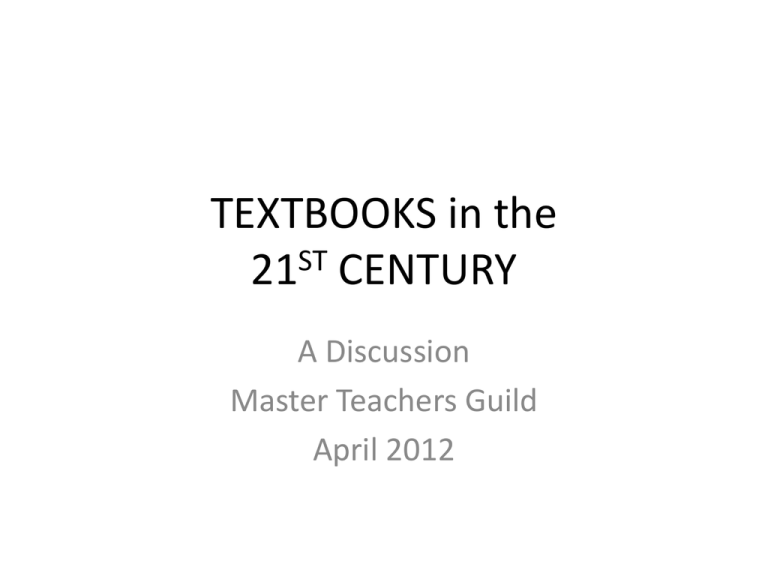
TEXTBOOKS in the 21ST CENTURY A Discussion Master Teachers Guild April 2012 Paradigm Changes Who is using e-Textbooks? Surveys: • Pearson Foundation 2012 – Tablet ownership among college students has more than tripled from a year ago. – A majority of college students now prefer to read digital books • Student Monitor 2011 – 5% bought e-textbooks in 2010 30% 25% 20% 15% 10% 5% 0% 2011 2012 Options for PRINT Textbooks • New or Used: – Buy • Bookstores (e.g., Matthews) • E-bookstores (e.g. VitalSource) – Rent • Rent a print book (new or used) for contracted time periods; uses express mail • e.g. BookRenter.com, or Chegg.com • Compare prices (e.g., BigWords.com) Sources: Publishers • Publishers’ on-line material – Most have electronic content that supplements the print textbook (via scratch-off passwords/CDs) • E.g. Elsevier’s StudentConsult • But some sell true e-textbooks (but not many medical titles so far) – Elsevier’s Pageburst – Thieme’s E-library (20 titles) – Lippincott/W & W’s Inkling • Informal survey of publishers in 2012: trying multiple formats; not moving too fast • “let the end-user decide” Sources of e-Textbooks: e-Vendors & Consortia • Amazon • Apple – iBooks 2 textbook platform: McGrawHill, Pearson, Houghton (undergraduates) • Consortium: Five publishers in “CourseSmart” – e.g., Mark’s Biochemistry • Some will sell a single chapter (Inkling) • Sell to individual subscriptions or institutional licenses Library (Learning Resources Center) • Access Med – Link to e-textbooks – Many of Lange’s medical textbooks are available – e.g., Harrison’s Medicine on-line • MD Consult – Link to e-textbooks – e.g., Robbins Pathology on-line • More emphasis on reference works and manuals than textbooks Library • Cost issues • Usage stats* – Total electronic usage of electronic Harrison’s, 1/1/12 to 3/21/12 = 1652 – Total circulation usage of print Harrison’s, 1/1/12 to 3/21/12 = 15 • Future of library and bookstore * Scott Thomson Sources: “Free” • “FreeBooks4Doctors” • e.g. Stryer Biochem. ‘02; Jakubowski biochem e-Text • Not many titles in English • “FlatWorld Knowledge” (few titles) • PDF files scanned from originals – No interactive features • Copyright issues – Provenance? Sources: Pirates • TouchTextbooks • BitTorrent • Protocol for peer-to-peer sharing of downloads • “…all students have this” • BitTorrent Trackers – e.g. Demonoid = site in the Balkans: get free downloads • Compliance Office • Information Technology E-Authors • You can self-author your custom textbook using software that uses file-types that are used by e-readers (e.g. EPUB) • e.g., Woods Hole marine ecology course • Several course contributors used a wiki approach to combine lectures notes and images, and created an iPad app – no royalties, but counts for promotions • If you already have a print textbook, the publisher may also offer an e-version, and the royalty arrangement may differ. Other Universities • E-readers pre-loaded with all textbooks – e.g., an iPad pre-loaded with textbooks is part of tuition & fees – Universities negotiate for volume discounts – But students resent limitation of hardware choices • Textbook bundling to reduce costs – But bundles may contain unwanted books RESEARCH • Folb (2011) Health Library at Pitt: survey – Use of e-books = 55% • 21% faculty assigned an e-book for class • 86% of interns, residents, fellows used an e-book to support clinical care. – Prefer PRINT for texts and manuals; prefer ELECTRONIC for reference books, research protocols, & pharmaceuticals. • Heaviest users used both • Cal State and Nature Publishing Group – Side-by-side comparison of old and new textbooks – Ongoing – no data yet E-Textbooks: Pros & Cons • Advantages: • Extra features, annotating & indexing, light weight, fast updates, costs, fast switching between texts, ecological, interactive use in classroom. • Disadvantages: • Variations in readers, ephemeral & no resale, damage or loss of readers, costs, ecological. CONCLUSIONS • Change is already here • Individual faculty solutions versus institutional decisions • Issues of cost and intellectual property DISCUSSION Summary of topics: • • • • • • • • Print vs electronic Publishers Library & bookstore roles Sources, legal & illegal Authoring e-books Individual vs institutional solutions Research on e-texts Pros/Cons
